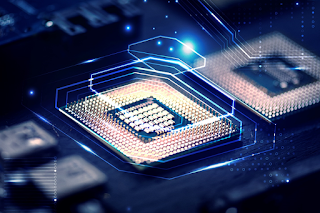Welcome to our blog page, where we explore the fascinating world of embedded systems and the critical components that power them - microcontrollers and microprocessors. These specialized CPUs play crucial roles in various devices and applications, each with distinct functionalities and applications.
Microcontrollers:
 |
A microcontroller is a compact integrated circuit that brings together a microprocessor core, memory (RAM and ROM), input/output peripherals (I/O ports), timers, and other essential components on a single chip. One of the primary features of microcontrollers is their low power consumption, making them ideal for battery-powered devices and energy-efficient applications.
Architecture and Features:
Most microcontrollers employ a Harvard architecture, which separates program memory (ROM) and data memory (RAM) into separate buses. This design ensures efficient access to both program instructions and data, enhancing overall performance. Additionally, microcontrollers often come with built-in timers and interrupt controllers, allowing them to respond swiftly to external events or signals.
Applications:
Microcontrollers serve as complete solutions for specific tasks or applications. You can find them in various devices, such as home appliances, automotive systems, industrial automation, consumer electronics, and more. Their integration into these systems enables them to control and interact with the external world through the integrated peripherals.
Programming:
Microcontrollers are typically programmed using specialized languages like C, C++, or assembly language. This programming approach optimizes their performance and ensures they execute dedicated tasks with precision.
Microprocessors:
On the other hand, a microprocessor is a general-purpose CPU designed for versatile computing tasks. Unlike microcontrollers, microprocessors lack integrated memory or peripheral interfaces on the chip. They require additional external components, such as RAM, ROM, and I/O controllers, to function as complete systems.
Architecture and Features:
Microprocessors commonly follow a von Neumann architecture, where data and instructions share the same memory bus. This architecture allows them to handle various general-purpose tasks efficiently. However, their complexity and dependence on external components might lead to higher costs compared to microcontrollers.
Applications:
Microprocessors are ideal for tasks that demand substantial computational capabilities, such as personal computers, servers, laptops, smartphones, tablets, and other computing devices. Their processing power makes them suitable for multitasking and handling complex computations.
Programming:
Microprocessors can be programmed using higher-level languages like C, C++, Java, etc., enabling faster and more accessible development in some cases.
Choosing the Right Processor for Embedded Systems:
When it comes to selecting between microcontrollers and microprocessors for embedded systems, several factors come into play. If your application requires specific tasks, real-time operation, and low power consumption, a microcontroller might be the best choice. On the other hand, if your system demands general-purpose computing and multitasking capabilities, a microprocessor could be the more suitable option.
In conclusion, both microcontrollers and microprocessors play essential roles in the world of embedded systems, each catering to different applications and requirements. Understanding their differences helps developers and engineers make informed decisions when designing and implementing embedded solutions.
We hope you found this blog informative and insightful. If you have any questions or thoughts on embedded systems, microcontrollers, or microprocessors, feel free to share them in the comments below! Stay tuned for more exciting tech insights in our future posts.


